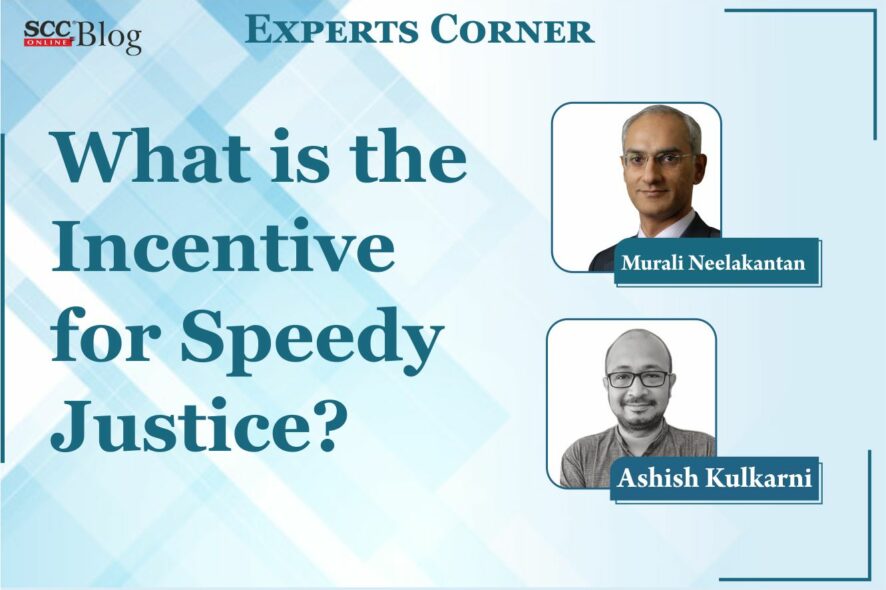Judicial pendency is by now an issue that is both familiar and pressing not just to the legal community, but to broader society as well. That India’s growth and well-being is being held back at least in part due to a sclerotic legal system is well known, but it bears repeated highlighting for precisely this reason.
With the recent Constitution Day speeches and annual celebrations, a lot is said about how the Constitution promised justice but the institutions that the Constitution created have failed to deliver on that promise. A recent column in a national newspaper recently made the point that litigants and lawyers (at least on one side of a civil case) have no incentive to finish a case as fast as possible. The column went on to ask if the judiciary itself has an incentive to speedily dispense with cases. Given that one of us is a lawyer and the other an economist, this is a sentence that piqued both our interests. In what follows we attempt to answer this question from both perspectives – economic as well as legal.
Many litigants and lawyers have very little incentive to have the dispute resolved quickly – this much is obvious. Interminable delays, repeated hearings and a seemingly endless parade of injunctions and appeals serve two (iniquitous) purposes: on the one hand, they ensure that justice is not speedily delivered and one party to the litigation benefits from status quo, and on the other, there is an increased chance that the other party may quite simply give up. There are examples of cases that wound their way through India’s legal system for over five decades, and may still have to wait for a final resolution. That, alas, is more the rule than the exception.
But the other question is the truly interesting one: does the judiciary have an incentive to resolve disputes efficiently? This is the exact opposite of a throwaway question, and our contention in (and our reason for writing) this is that the judiciary does in fact have the tools to negate the perverse incentives that invariably attach themselves to “at least one side of a civil case”.
There is, in our legal system[1], just as it is in all other civilised legal systems, sufficient provisioning to ensure that frivolous litigation is minimised. What, one may ask, is frivolous litigation? Not only is it a fair question, but it is a question on which the legal system in India has expended a fair amount of effort and time. As things stand our legal system defines frivolous litigation to be one that “has no merits whatsoever and is intended to harass the defendant or is an abuse of the process of the court”.
We do not just define it, we have specific provisions against frivolous litigation in the Civil Procedure Code, 1908. Order 6 Rule 16 allows, for the striking out of pleadings which, among other things, may be “unnecessary, scandalous, frivolous or vexatious”. Similarly, Order 7 Rule 1 requires that the case terminates at the threshold when the plaint does not make out a case. On a related note, Section 35-A explicitly provides for compensatory costs in respect of false or vexatious claims or defences.
Each of these provisions exist so that frivolous litigation is either minimised, or failing which, it is adequately penalised. In other words, there are specific, negative incentives in place to deter frivolous litigation that is designed to simply tarry the delivery of speedy justice.
India is, of course, not unique in having these incentives in place. We are, however, unfortunately guilty of not using these incentives as much as we perhaps should. We have ended up both creating and perpetuating a culture in which frivolous litigation has become the norm, rather than the exception. And even more unfortunately, this has since metastasised into a range of related problems – the abuse of special leave petitions being only one of them, public interest litigation being another, not to mention the cases of personal liberty and important constitutional issues being deprioritised.
The judiciary may not have any incentives but, as it turns out, it does indeed have the tools in place to ensure that litigants do not exploit the system. The fact that these tools are not used as much as they could be is inescapable and is perhaps a reason for the current state of justice in India.
The questions that remain, then, are the following: why is this the case? Why does the judiciary not have any incentives to use these tools to deliver justice? Does the fault lie with our legal system, or with us as a society? One of us has written about this in the book – An Idea of a Law School, Ideas from the Law School (2019). How might change be brought about, and should the impetus come from us in society, or from the judicial system?
The answer, we think, lies in taking a long hard look at ourselves in the mirror.
And in that case, we fear, no incentive exists.
†Murali Neelakantan is the principal lawyer at amicus. He was formerly global general counsel at Cipla and global general counsel and executive director at Glenmark.
†† Ashish Kulkarni teaches courses in economics and statistics at the Gokhale Institute of Politics and Economics, Pune, and blogs at econforeverybody.com
[1] See Law Commission of India — Report No. 192- Prevention of Vexatious Litigation (June, 2005).







